42 reading sugar on food labels
Amazon.com: Airtight Food Storage Containers with Lids for … 27.11.2019 · PRAKI Airtight Food Storage Container Set, 16 Pcs BPA Free Plastic Dry Food Canisters for Kitchen Pantry Organization and Storage Ideal for Cereal, Flour & Sugar - Labels, Marker(Black) Vtopmart Cereal Storage Container Set, BPA Free Plastic Airtight Food Storage Containers 135.2 fl oz for Cereal, Snacks and Sugar, 4 Piece Set Cereal Dispensers with 24 … 13 Misleading Food Label Claims and How Not to Be Tricked - Sentient Media 1. Label Says "Sugar-Free". The Food and Drug Administration (FDA) provides guidelines for a variety of common food labels, including sugar-free. While the term suggests that products labeled this way would be completely free of sugar, they can actually contain up to 0.5 grams of sugar in a single serving size.
A Real Person's Guide To Reading Nutrition Labels But first, here are a few nutrition terms to understand: Calorie-free: 5 calories or less per serving. Low calorie: 40 calories or less per serving. Reduced calorie/fat: At least 25% less calories/fat than the original product. Low fat: 3 grams (g) or less of fat per serving. Fat-free: Less than 0.5 g of fat per serving.
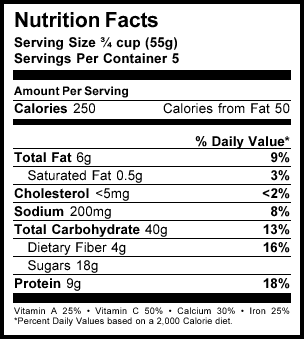
Reading sugar on food labels
How to Read Nutrition Labels for Sugar - hekagoodfoods The number of grams of sugar. Keep in mind, one gram of sugar is roughly equivalent to 1/4 teaspoon of sugar. A percentage indicating how much of your recommended daily intake the item contains. While this is helpful to reference, the FDA recommends natural and added sugars account for no more than 10% of your daily caloric intake. Added Sugars on the New Nutrition Facts Label | FDA Labels for foods and beverages with added sugars will list the number of grams and the percent Daily Value (%DV) for added sugars within the Nutrition Facts label. Having the word "includes" before... Food Labels | CDC - Centers for Disease Control and Prevention Check the Serving size first. All the numbers on this label are for a 2/3-cup serving. This package has 8 servings. If you eat the whole thing, you are eating 8 times the amount of calories, carbs, fat, etc., shown on the label. Total Carbohydrate shows you types of carbs in the food, including sugar and fiber.
Reading sugar on food labels. Understanding Food Labels | The Nutrition Source | Harvard T.H. Chile implemented the Law of Food Labeling and Advertising in 2016, comprised of mandatory front-of-package (FOP) warning labels, restrictions on child-directed marketing, and the banning of sales in schools of all foods and beverages containing added sugars, sodium, or saturated fats that exceeded set nutrient or calorie thresholds. [1] Sugars on food labels - Sugar Nutrition Resource Centre When we say 'sugar' we generally mean table sugar or sucrose. Sugar in the ingredients list is limited to this definition, plus a few derivative products. Other sugars added as ingredients are treated differently. The Food Standards Code specifies that other added sugars must be listed using their specific names in the ingredients list. How To Read Nutrition Labels - Mayo Clinic Diet The % Daily Value (DV) tells you how much a nutrient in a serving of food contributes to a daily diet. 2,000 calories a day is used for general nutrition advice. Low is 5% or less. Aim for low in saturated fat, trans fat, cholesterol, sodium, and added sugars. High is 20% or more. Aim high in vitamins, minerals and dietary fiber. 4. How to read food labels | healthdirect Sugar: Sugar is a type of carbohydrate. It is better to choose healthier carbohydrates and to limit foods that are high in added sugars. Fibre: High fibre foods such as wholegrain bread and cereals improve digestion and help you to feel full. Sodium: This tells you how much salt the product contains. Eating too much salt is linked to high blood pressure and can lead to heart disease, …
Understanding Ingredients on Food Labels - American Heart … Mar 06, 2017 · There are many terms used for sugar on food labels. You might see sugar listed as the fourth ingredient in a product and think it’s not so bad. But sugar can also be listed as high-fructose corn syrup or corn syrup, agave nectar, barley malt syrup or dehydrated cane juice, to name just a few. Read more about sugar and sweeteners. How to Understand and Use the Nutrition Facts Label | FDA - U.S. Food … 25.02.2022 · People look at food labels for a variety of reasons. But whatever the reason, many consumers would like to know how to use this information more effectively and easily. The following label-reading ... How to Read Food Labels Without Being Tricked - Healthline Other added sugars: barley malt, molasses, cane juice crystals, lactose, corn sweetener, crystalline fructose, dextran, malt powder, ethyl maltol, fructose, fruit juice concentrate, galactose,... Understanding sugar content on food labels - Diabetes Care Community Understanding sugar content on food labels is important, to ensure that you're consuming healthy amounts. Reading the ingredient lists and nutrition facts tables on packaged foods is a helpful way for you to check what kind, and how much, sugar a product has. Finding sugar content in the ingredients list
How to Read Food Labels for Healthy Eating - Immuno Labs Sodium: 20 mg. Total Carbohydrates: 19g (8% of your daily value) Dietary Fiber: 0g. Total Sugars: 11g (18% of the daily value) Includes 9g Added Sugars. Protein 1g. Vitamin A 230mcg. Vitamin C 23mcg. Vitamin E 3.8 mcg. how to understand food labels - Eat For Health how to understand food labels What to look for… Don’t rely on health claims on labels as your guide. Instead learn a few simple label reading tips to choose healthy foods and drinks, for yourself. You can also use the label to help you lose weight by limiting foods that are high in energy per serve. 100g Column and Serving Size Reading food labels: Tips if you have diabetes - Mayo Clinic Look for foods with 3 or more grams of fiber. Put sugar-free products in their place Sugar-free doesn't mean carbohydrate-free. Sugar-free foods may play a role in your diabetes diet, but remember that it's equally important to consider carbohydrates as well. A sugar-free label means that one serving has less than 0.5 grams of sugar. Food label reading guide | Nutrition Australia What to look for when reading food and drink labels (per 100g) Health Star Ratings The Health Star Rating is a front of pack labelling scheme which can be used to make healthier food choices at a glance. The rating range is from ½ - 5 stars and the more stars, the healthier the choice. Recommended minimum star ratings for food and drink categories
Sugar - natural, added, health risks, cutting intake, substitutes ... Check food labels, as above. Sugar-sweetened drinks can make it easy to overconsume sugar because they don’t help your body to feel ‘full’ or satisfied. To reduce added sugars, you could also: replace breakfast cereals containing dried fruit with fruit-free muesli or porridge; cook eggs for breakfast ; buy plain, unsweetened yoghurt and add fresh fruit to sweeten it, if you wish; …
Sugar: Food Sources, Health Implications, and Label-Reading Let's take a look at some labels to practice identifying naturally occurring and added sugars in foods. Below are labels from a 6-ounce serving of plain yogurt. There are 6 grams of total sugar and 0 grams of added sugar listed on the label. What ingredients contain naturally-occurring sugar? Figure 4.37.
The Basics of the Nutrition Facts Label - Academy of Nutrition and ... 04.03.2022 · Use the percent Daily Values (DV) to help evaluate how a particular food fits into your daily meal plan. Percent DV are for the entire day, not just one meal or snack. Daily Values are average levels of nutrients based on a person who eats 2,000 calories a day. A food item with a 5% DV of fat provides 5% of the total fat that a person who needs ...
Biden unveils plan for traffic light nutrition labels on food The Biden Administration wants to make traffic light nutrition labels mandatory on the front of food packaging as part of a massive crackdown on the nation's bulging waistline. It would see all ...
How To Read Food labels for Sugar | My Sugar Free Kitchen On the label check the sugars in the nutrition panel. 5g/ml or less of sugar per 100g/ml = this would count as low sugar content. It means 5% of the ingredients are sugar Between 5g/ml and 20g/ml of sugar per 100 grams = medium sugar content. With 20ml of sugar per 100 ml, this means the product is 20% sugar…not so good.
How to Read Food Labels: Your Complete Consumer Guide The words and images on packaged foods are there for one of two reasons — to sell or to inform. Food manufacturers want to present their products in as positive a light as possible and may sometimes make questionable claims about them. Regulators want the labels to include clear and honest data about quality, nutrients, and ingredients.
Understanding food labels | Diabetes UK The labels show how many calories are in the food or drink and are also colour coded to show whether the food is low (green), medium (amber) or high (red) in fat, saturated fat, sugar and salt. The information on the front of the pack also tells you how the portion of the food contributes to the Reference Intake (RI) of an adult.
Learning To Read Labels :: Diabetes Education Online Nutrition Facts labels list a breakdown of the total carbohydrate from dietary fiber, sugars and sugar alcohols. This can be confusing. This can be confusing. On Nutrition Facts food labels, the grams of dietary fiber are already included in the total carbohydrate count, but because fiber is a type of carbohydrate that your body can’t digest, the fiber does not increase your blood sugar …
How To Read Food and Beverage Labels - National Institute on Aging Be on the lookout for terms that indicate added sugar, such as brown sugar, corn sweetener, corn syrup, dextrose, fructose, and high-fructose corn syrup. Artificial sweeteners such as sucralose, saccharin, aspartame, and acesulfame should also be consumed in moderation. Light, low-calorie, organic labeling — what do these mean?
How to read labels for added sugar - That Sugar Movement One: Look for foods under 5g total sugar/100g In Australia, the Nutrition Information Panel (NIP) on the back of food and drink packaging lists total sugars content. It does not separate intrinsic sugars from added sugars. Yet, it is the added sugars - not those that are intrinsic or naturally-occurring in whole foods - that we are concerned with.
Your Guide to the New Food Label | National Kidney Foundation Food labels have percent daily values listed for a set group of nutrients based on the Food and Drug Administration (FDA) recommended 2000 calorie diet. You may need more or fewer calories, so check with your kidney dietitian. Using the daily percent values and ingredients listed, you’ll be able to choose foods within your special diet needs.
How to Read Food Labels | mySugr Before reading the rest of the label, look at the serving size. The rest of the information — such as carbs, calories, sugars, fiber, and more — will be based on the serving size that's listed. Eating more than a serving size means you'll get more carbs, sugars, and calories than what's listed.
Making Sense of Food Labels | ADA - American Diabetes Association As of January 2021, labels must include added sugar to help you know the difference between sugar that occurs naturally in the food (like yogurt or fruit) and sugar that was added during processing (like in cookies, candy and soda). Many labels have already made the change. Learn more about sugar and the three main types of carbohydrates.
Food Labels | CDC - Centers for Disease Control and Prevention Check the Serving size first. All the numbers on this label are for a 2/3-cup serving. This package has 8 servings. If you eat the whole thing, you are eating 8 times the amount of calories, carbs, fat, etc., shown on the label. Total Carbohydrate shows you types of carbs in the food, including sugar and fiber.
Added Sugars on the New Nutrition Facts Label | FDA Labels for foods and beverages with added sugars will list the number of grams and the percent Daily Value (%DV) for added sugars within the Nutrition Facts label. Having the word "includes" before...
How to Read Nutrition Labels for Sugar - hekagoodfoods The number of grams of sugar. Keep in mind, one gram of sugar is roughly equivalent to 1/4 teaspoon of sugar. A percentage indicating how much of your recommended daily intake the item contains. While this is helpful to reference, the FDA recommends natural and added sugars account for no more than 10% of your daily caloric intake.
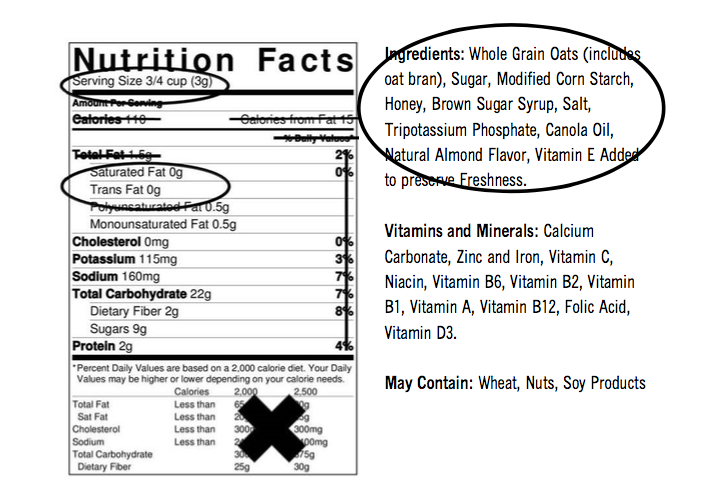

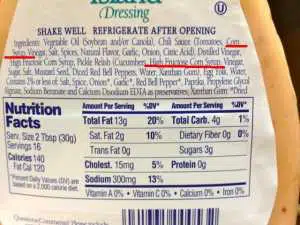

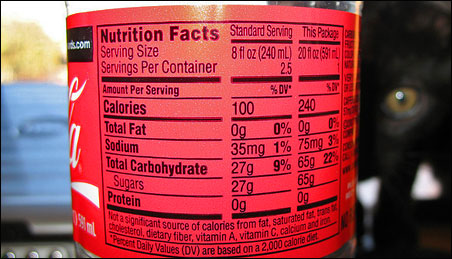

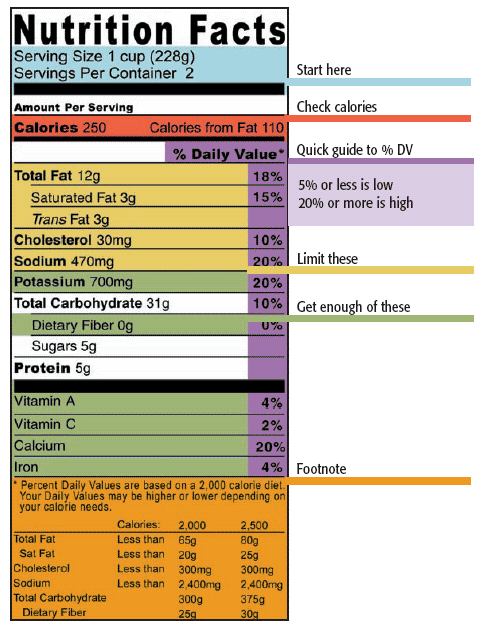


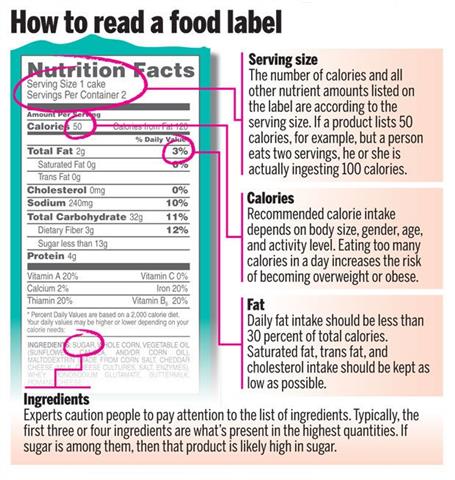
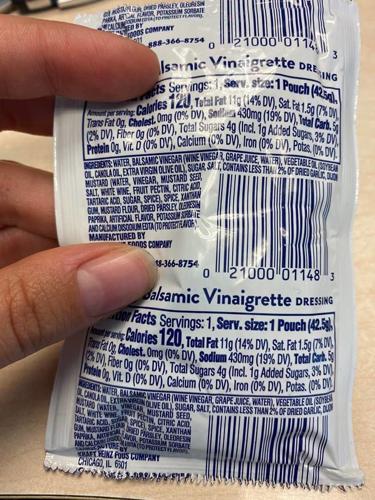

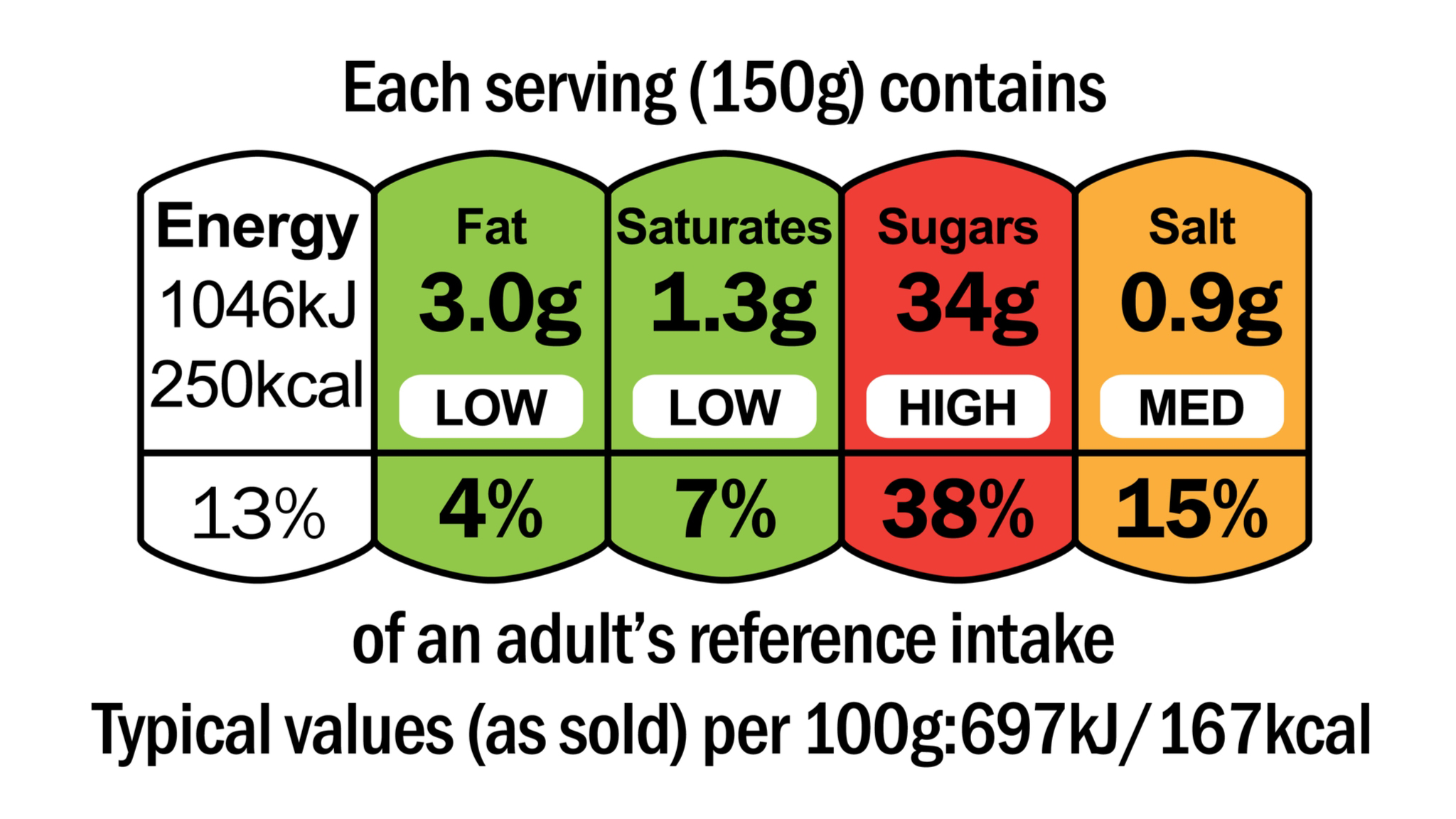

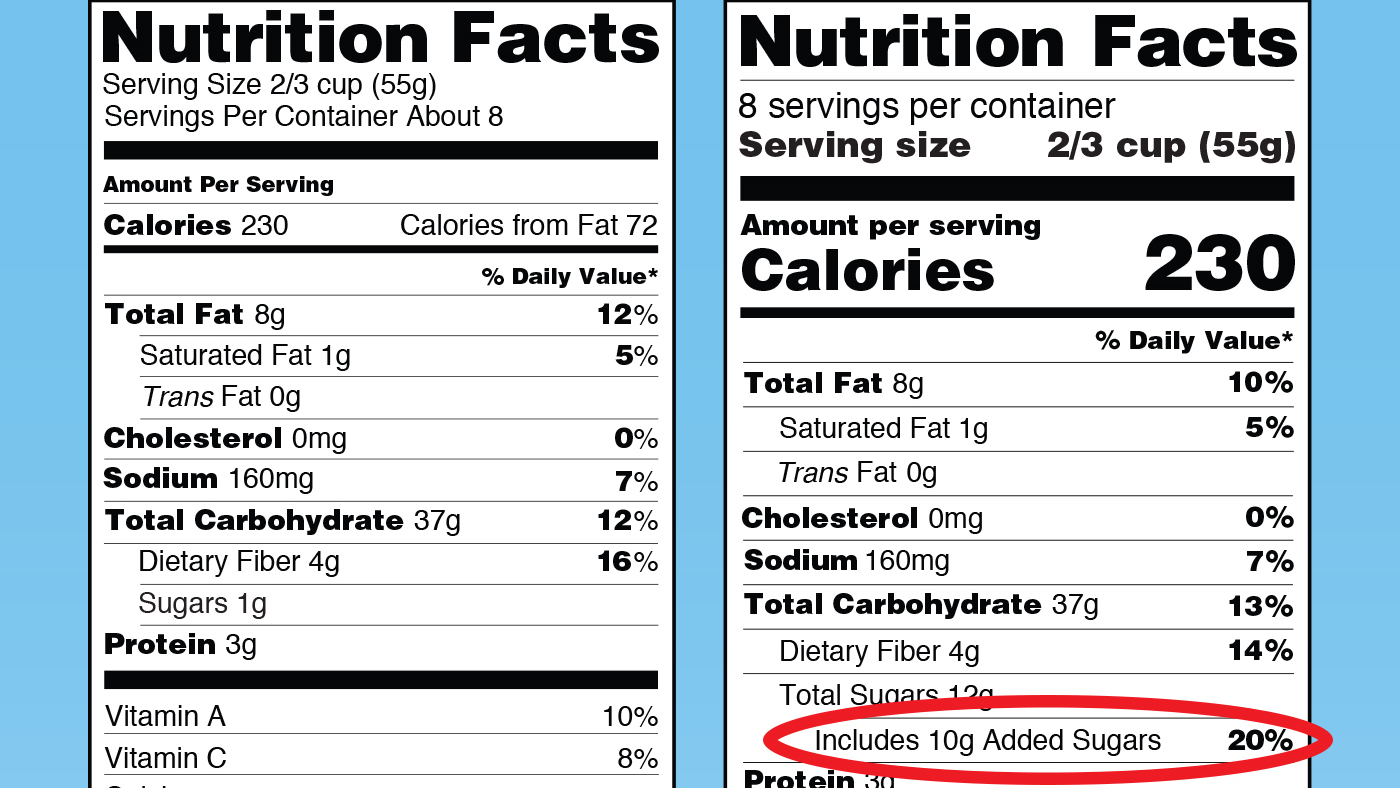
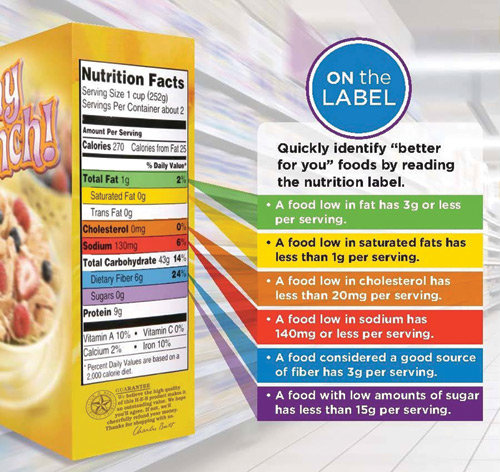





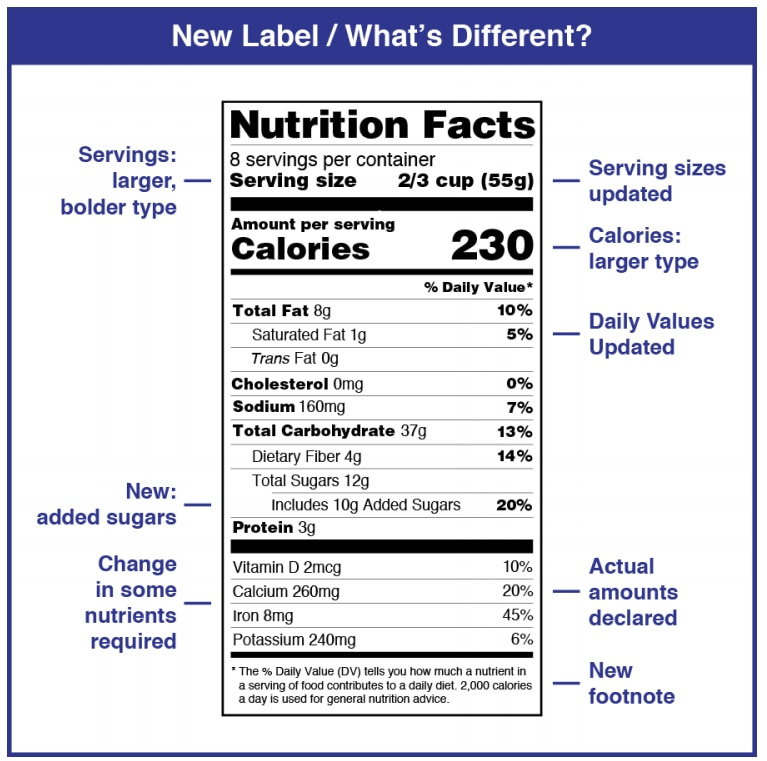
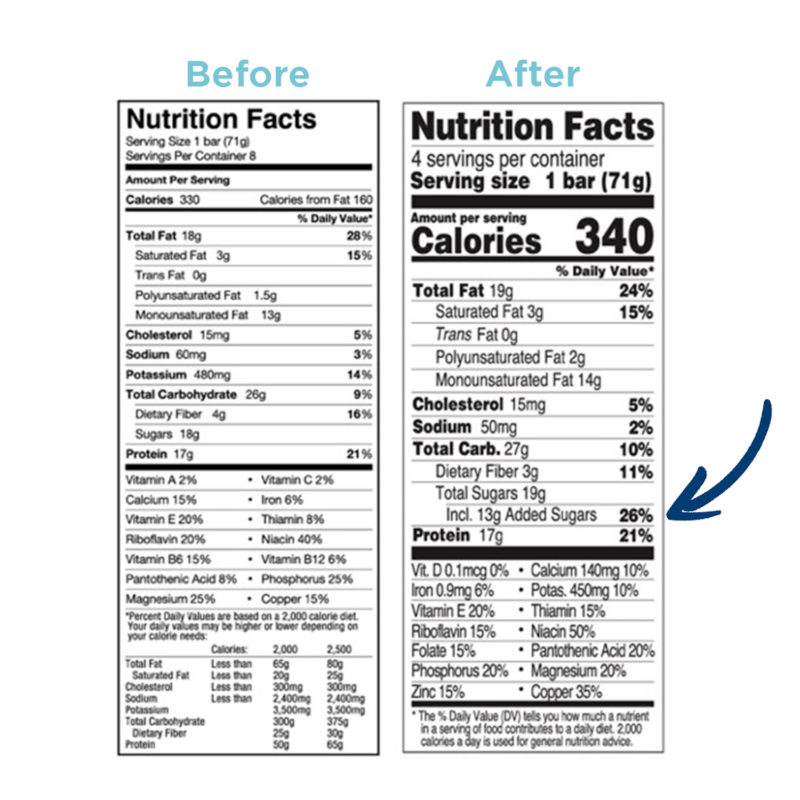
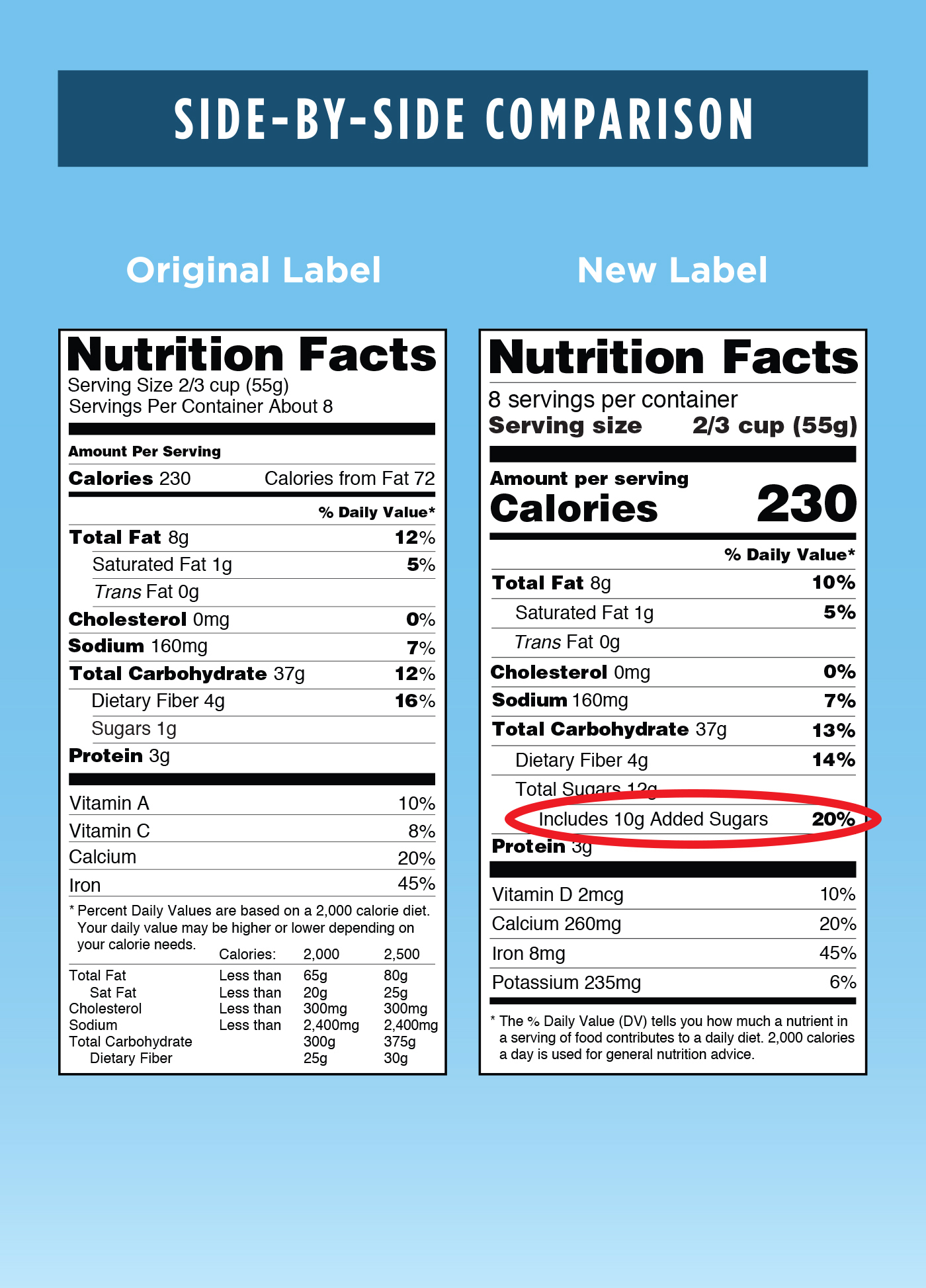




:format(jpeg)/cloudfront-us-east-1.images.arcpublishing.com/tgam/OWZVZMM2JBG7ZIRF7RZAZXOJDI.jpg)
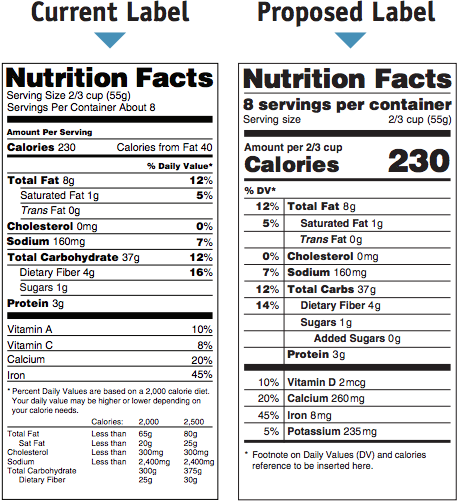
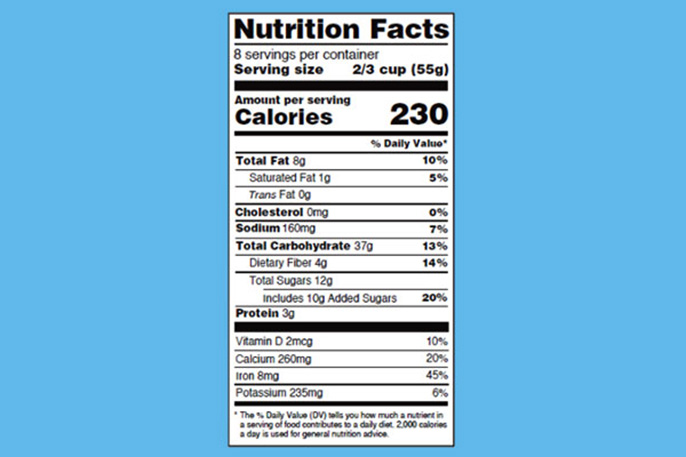
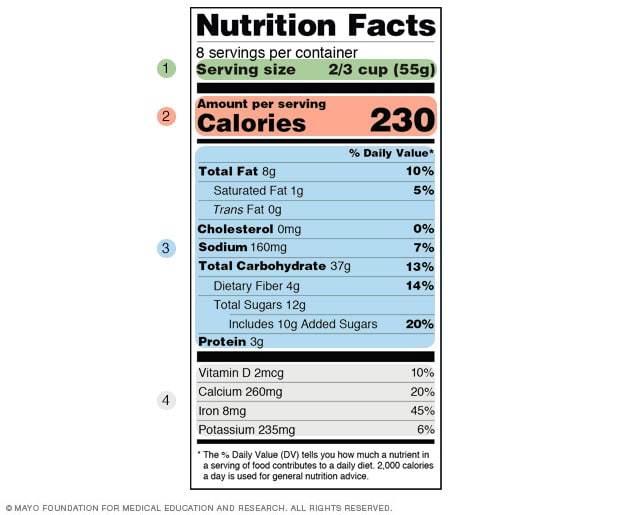



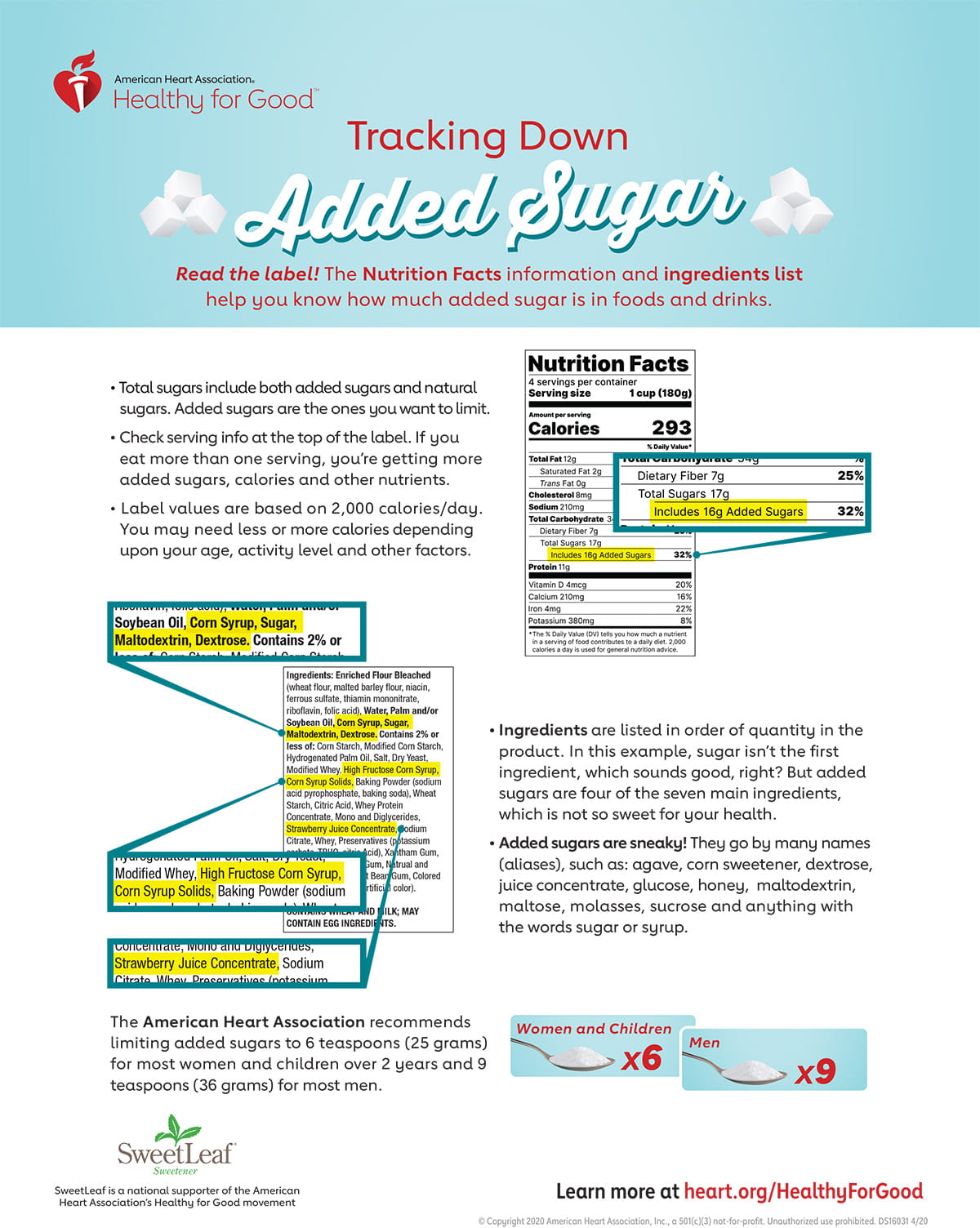
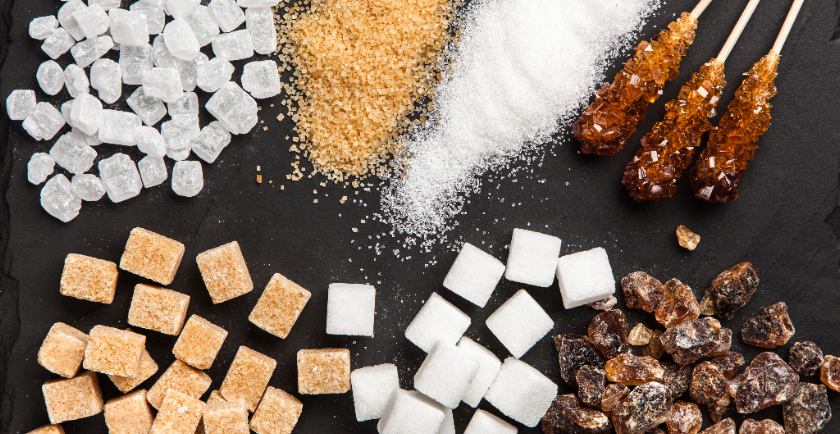
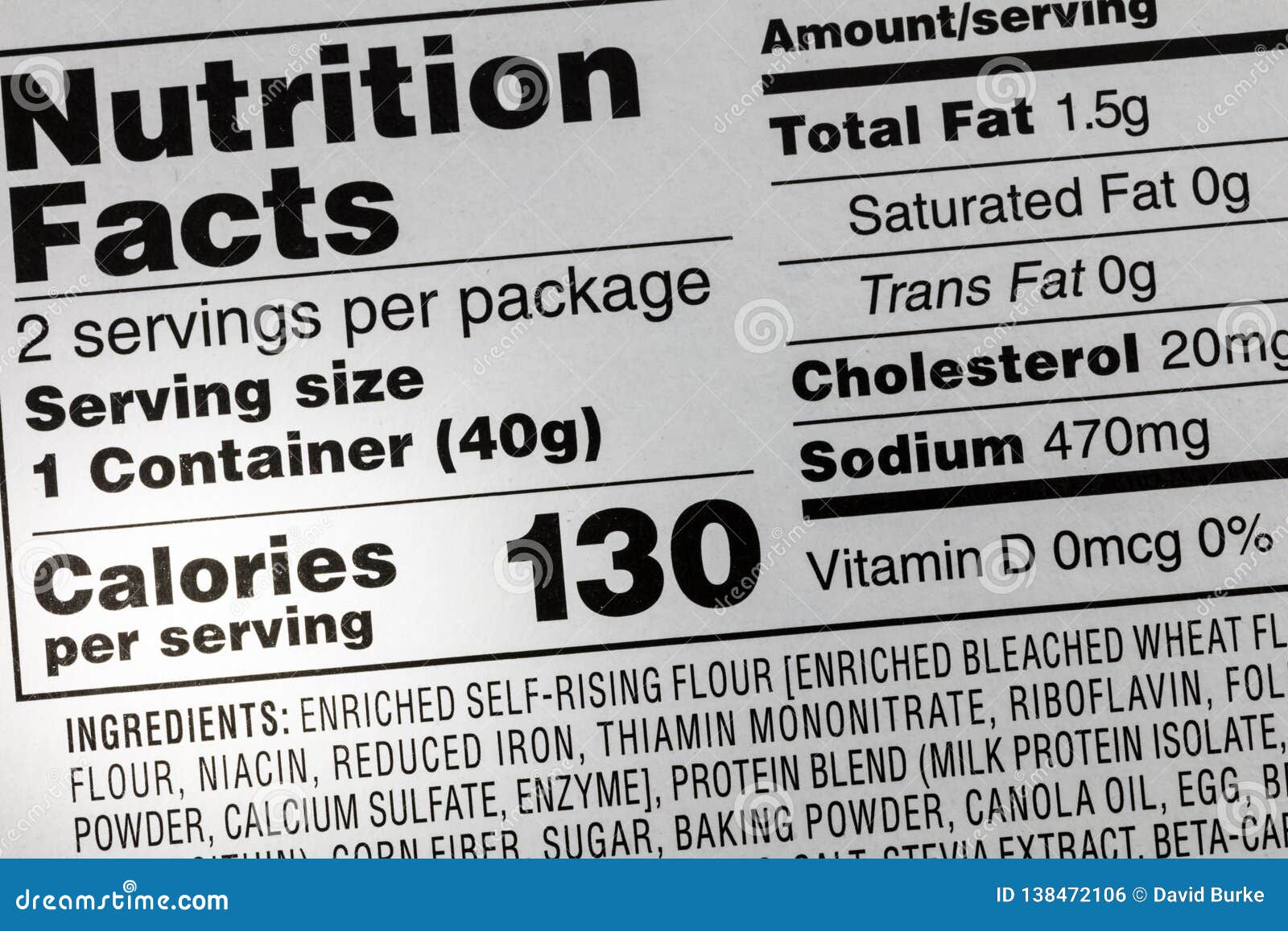

:format(webp)/arc-anglerfish-tgam-prod-tgam.s3.amazonaws.com/public/KEYY6O2OGBGOTPVOEJ5W6UM55E.jpg)
Post a Comment for "42 reading sugar on food labels"